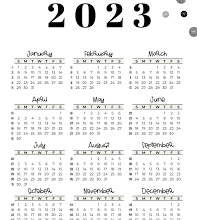Are dream catchers Indian?

Dream catchers are a popular item of decor, hung up in bedrooms around the world. They’re often seen as a symbol of luck, protection, and good dreams. But where do dream catchers originate from? Are they an Indian tradition or something else? In this article, we’ll explore the origins of dream catchers and find out if they are indeed an American Indian tradition. Read on to learn more about this beautiful decorative piece and its history!
The history of dream catchers
The dream catcher has been a part of Native American culture for centuries. The earliest known reference to the dream catcher was in the 18th century, when an Ojibwe woman named Asibaan wrote about them in her journal.
The dream catcher was traditionally used as a tool to help ensure good dreams for children. The webbing of the dream catcher would catch bad dreams and allow only good dreams to pass through. The good dreams would then slide down the feathers to the person sleeping below.
The tradition of making and using dream catchers has continued throughout the years and can be found in many different cultures. Today, dream catchers are often used as decorative items or given as gifts.
The meaning of dream catchers
Dreamcatchers have been around for a long time and have been used by many different cultures. The meaning of dream catchers varies depending on the culture, but they are generally used as a way to protect people from bad dreams.
There are many different stories about the origins of dream catchers, but one of the most popular is that they were first used by the Ojibwe people. The Ojibwe are a Native American tribe that lives in what is now Canada and the United States. According to Ojibwe legend, Dreamcatchers were created by Asabikeshiinh, the Spider Woman. She was responsible for taking care of children, and she wanted to make sure that they only had good dreams.
Asabikeshiinh taught the women of her tribe how to make dream catchers. They would weave them out of willow branches and decorate them with feathers and beads. The dream catcher would be hung over the bed of a sleeping child, and it was believed that the good dreams would pass through the holes in the web and down the feathers to reach the child. The bad dreams would get caught in the web and die when the sun came up.
Today, dream catchers are still made by Native Americans, but they have also become popular with people from all over the world. You can find them for sale in souvenir shops, at craft fairs, and online. They come in all shapes
Whether or not dream catchers are Indian
dream catchers are not Indian. They are a product of Native American culture, and while they may have been inspired by traditional Indian beliefs, they are not authentically Indian. There are many fake “Indian” dream catchers for sale, made by non-Indians, and these are not true representations of the culture or the craft. If you’re looking for a genuine dream catcher, be sure to do your research and buy from a reputable source.
The cultural appropriation of dream catchers
The cultural appropriation of dream catchers is a touchy subject. On one hand, many Native Americans feel that their culture is being appropriated and misused when non-Natives use dream catchers. On the other hand, some non-Natives feel that they are honoring Native American culture by using dream catchers.
There is no one answer to whether or not the cultural appropriation of dream catchers is okay. It is a complex issue with multiple perspectives. What do you think?
Conclusion
Dream catchers have been used by many different cultures for centuries, with the original concept originating from Native American tribes. The dream catcher is a beautiful and powerful symbol of cultural heritage that allows us to connect with our past and recognize the importance of understanding other cultures. Despite modern variations, it’s clear that dream catchers are an important part of Native American culture, and their significance should not be overlooked or forgotten.



